Dominance and submissive behaviour
Many people see dominance as a bad thing with dogs which is a shame as it is simply another way of saying that they naturally like to be in charge.
Being dominant is the opposite of being submissive which again is neither good nor bad. Being naturally submissive tends to mean that a dog will be more keen to follow than to be in charge. People are no different. It's just that we are a little bit more subtle about how we go about it! Not all of us want to be the manager of a large multi-national company with big decisions to make and many people to manage. However there are still lots of people who do.
In the video above called “Dominant dog play” I have caught on camera two lovely dogs named Sadie and Zoe who demonstrate the beauty of dominant and submissive behaviour during play. They live together and have had a lot of time to practice – to watch it is poetry in motion. Zoe, the Red Heeler is 12 years old and Sadie the Staffy Cross is 14 months old.
In this short dog training video I managed to capture the following dog behaviours and body language:
| The activity or body language | Reason or meaning in dog |
|---|---|
| The play bow | – Come play with me |
| Head over the back of the neck | – I am in charge |
| Roll on the back | – You are in charge |
| Spinning 360 degrees | – Come play, I am so very happy |
| Sadie jumping towards Zoe’s face | – Trying to get Zoe to react |
| Teeth baring | – To protect the gums during play |
| Attention barking | – Trying to get Zoe to play |
| Nose punching | – Trying to get Zoe to play |
| A complete body shake | – Relaxing |
| Growling and a telling off | – Don’t do that again |
Watching dogs is one of the great ways of learning about them, and in this video it is very clear who is in charge and who is the young upstart. Both dogs are very happy in their different roles, which is why it’s lovely to watch.
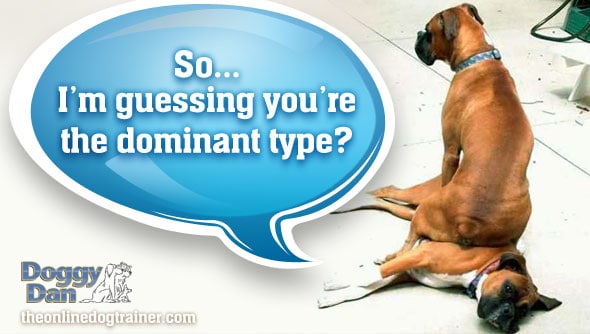
Understanding Dogs
Understanding how dogs view the world is vitally important as so much of their behaviour stems from some very simple concepts, such as who is in charge. And if you're experiencing behavioural problems with your dog, chances are it has to do with the hierarchy of who's the leader in your home. Almost 95% of the dog consults I do are with owners who're experiencing their dog being the Leader of the Pack, and they're not aware of it.
As soon as you establish yourself as the Pack Leader, your dog's behaviour will change before your very eyes. They suddenly hand the responsibilities of being in charge over to you, and are happy to follow. I have created 5 Golden Rules to becoming the Pack Leader, which when put in place consistently, often instantly solve most behavioural problems with your dog.
Enjoy the dominant dog play video and if you need help to stop any unwanted dog behaviours check out my program, The Dog Calming Code to see how I've trained over 77,000 dogs! Or, if you have a puppy, get started with my Puppy Coach training program!
.
All the very best,
 .
.


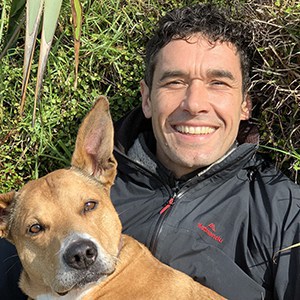


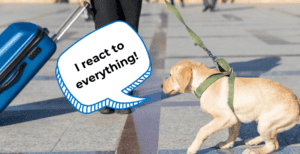
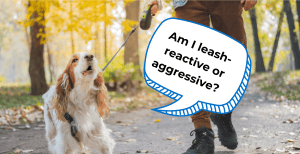
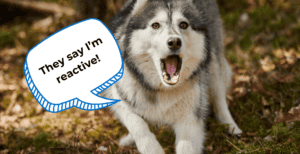
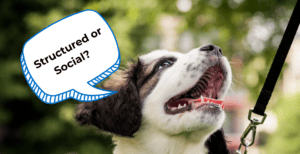
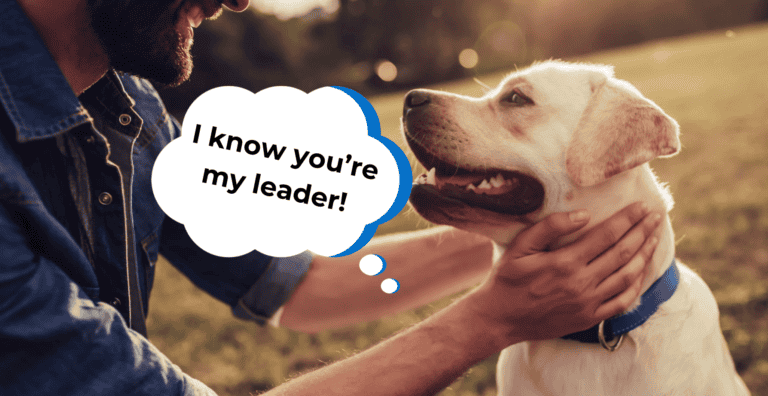
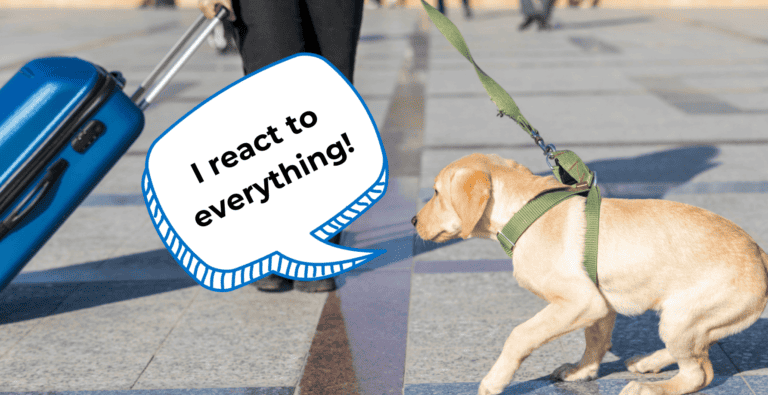
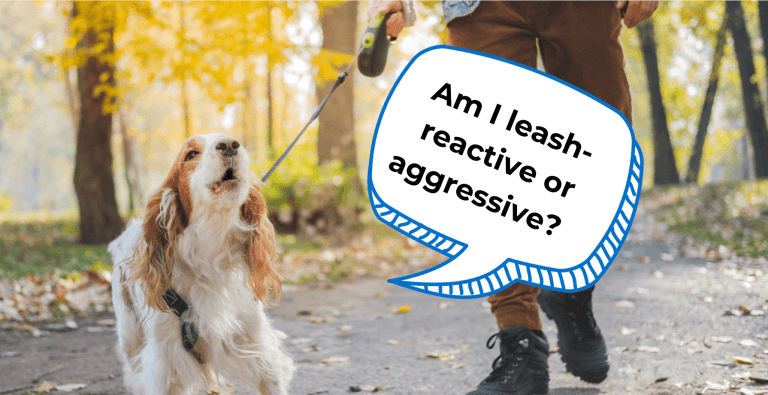

12 Responses
Hi Dan,
My 15 week Great Dane puppy, male not altered, will try to grab my 1 year old Boston Terriers, female spayed, back and try to stand over her while they are playing. Is this something I should stop him from doing? The Boston doesn’t seem to care she just thinks it’s play, but I would love your thoughts on it!
Thanks!
Hi Syra,
When dogs are playing together I generally do advise owners to intervene if they feel the play is too rough, one sided or one of the dogs is really unhappy about the interaction. If you feel that both dogs are enjoying the interaction and you feel comfortable with the level they are playing at then it’s fine to let it continue. I guess it’s not different from monitoring children when they play and intervening when things start to get out of hand! Best, Doggy Dan
Hi Dan,
I’m wondering what your thoughts are on a 5 year old (Ridgeback viszla mix, about 55 pounds) who is always following around our 5 month old dachshund puppy and trying to get her to play. They do a lot of mouthing, nipping, licking, and jumping and romping around. But my big guy never seems to want the games to end! I also cannot tell if the puppy is walking away or just getting some space to turn around and continue playing with the big guy. He follows her and takes a dominant stance over her, and she turns her head up and nips at him and the games continue. Often I will pull her away only for her to jump up to get to him, but it all seems very intense and I am wondering if there are thijngs I should look out for that may indicate she needs a break. Naturally at 9 pounds, the puppy takes the submissive role when playing with the big guy.
Thanks for your insight.
Jessica
Hi Jessica,
It’s really normal for dogs to try and establish a pecking order when a new dogs moves into the home, and play is one of the ways they do this. If you feel that the play is getting too rough or one-sided then I would recommend calmly intervening…just to show your older dog that you decide how they interact together and that there are limits. Given that there is quite a size difference between your two dogs then you can be a little more cautious with how they play, because even a heavily placed foot on your Dachshund could cause injury! If your older dogs is getting a bit pushy or rough then calmly move him away, or if he is having trouble calming down you can separate the two. It can be really effective to place your older dog in another room for a few minutes or pop him on-leash and keep him with you until he relaxes a little and his focus is no longer on your puppy. There’s no need for you to get upset but try to remain really clear and consistent with the behaviours you don’t want him to do…..this will allow him to use self-control and manage his own behaviour. Good luck with it all….best, Doggy Dan
My 15 month old Suzuki cross greyhound bitch gets aggressive with my 9 year old Jack Russell boy or any other dog when in the boot of our car. They have plenty of room and he is not showing any signs of aggression towards her. Could it be that she is not comfortable in this surrounding? Or maybe trying to be dominant in this area?
Hi Amy, it’s likely that your greyhound is unsettled by the car journey and is venting that anxiety by behaving aggressively towards your other dog. The easiest solution would be to have them ride in separate sections of your car or have one of them in a crate in the boot section. Doggy Dan
Hey Doggy Dan,
Love your site, i.m a animal lover aspecially Rottweilers. We also have the many problems with our dog when he was a puppy ,but we have learned 🙂 My question to you is will you read my site and give me comment
thank you so much
Hi Gerda,
I agree that Rottweilers are amazing dogs! Did you have a specific question you wanted me to answer for you? If you are experiencing behavioural issues then my website TheOnlineDogTrainer.com covers many common behavioural issues…maybe take a quick look…its a $1 trial for 3 days…all the best Doggy Dan
We have a 5 yr old Maltese/Shih Tzu and a 5month old lab. The Lab is always bugging the little dog to play and gets a little too worked up, the little dog will give him warning growls, barks and snaps but it just seems to rile the pup up more(although with other dogs at the park the pup is very submissive). I’m also nervous as the pup gets bigger that he may accidentally hurt the little dog if he doesnt learn when enough is enough. How do I make these boys get along?!
Hi Laura,
this is quite a serious situation in that if you do not protect your little dog and your Lab gets over the top things can easily go wrong. It is not an ideal situation as your pup is going to be much bigger than your pug. So your pug will struggle to discipline your Lab….(which is happening now.) You really need a lot of tools, and knowledge (especially how to establish yourself as the pack leader) so that all the dogs are calmer, listening to you and more respectful. There is not a quick one paragraph answer to this situation. You can succeed however I suggest that you need to get a good program in place which will help you to understand that dogs more, where they are coming from and what is going on. For $1 you can check out my video website http://www.theonlinedogtrainer.com a comprehensive dog training site which will talk you through all of this. There is even an entire section on dogs fighting each other in the home. (I know that you are not at this stage yet however it is what can happen if action isn’t taken early, now is a great time to sort things out.
All the best, Doggy Dan 🙂
I am an affiliate of yours and I can’t seem to find your affiliate tools. How can I find them?
Hi Glen,
I have just sent an email through to you…sorry for the delay. Regards Dan